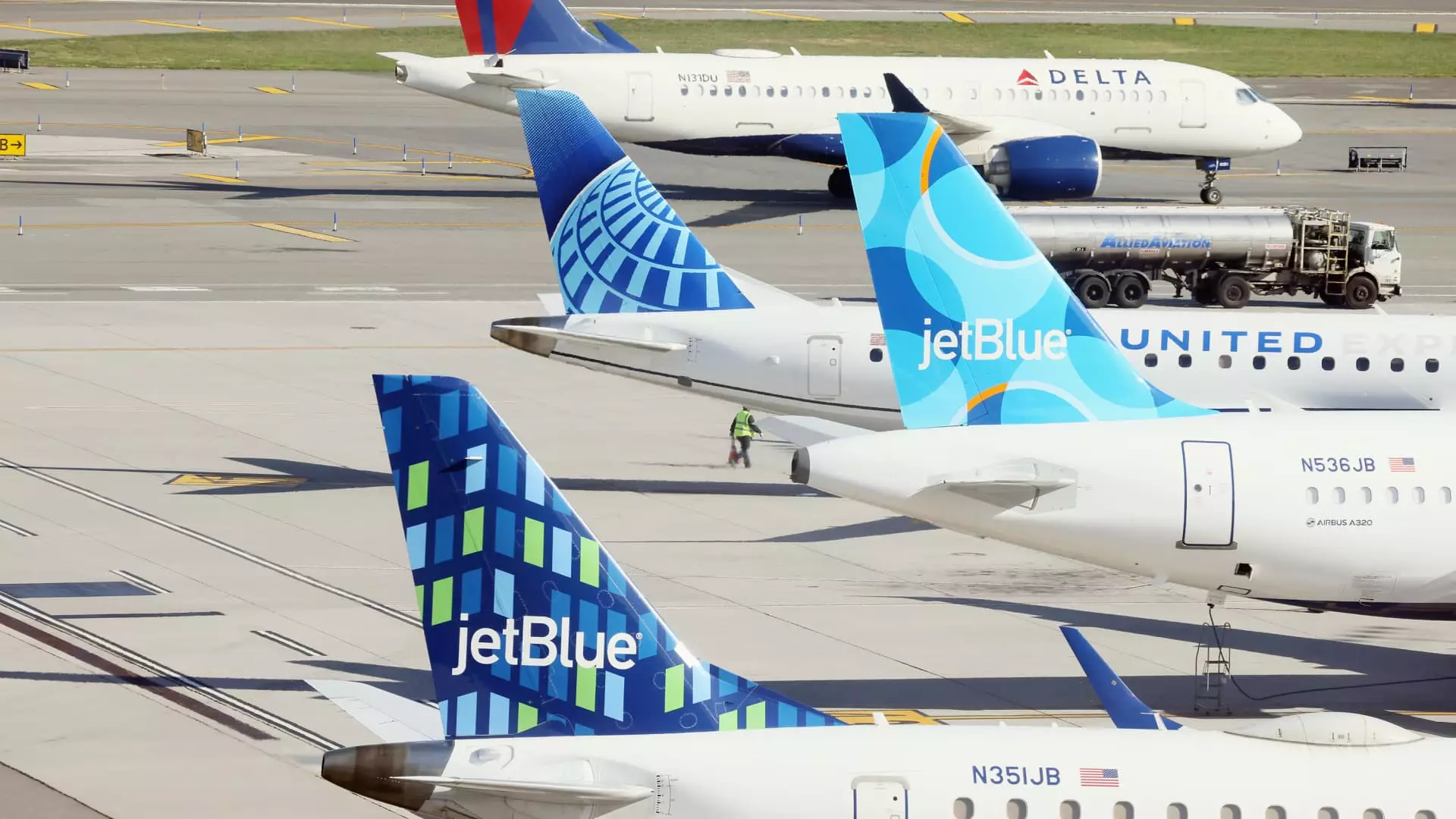In an effort to combat an oversupplied domestic market that has led to lower fares and reduced profits, U.S. airlines are making significant capacity reductions through the end of the year. This move comes despite strong summer travel demand and could potentially result in higher fares for passengers. According to a note from Deutsche Bank, U.S. airlines recently implemented one of the industry’s largest week-over-week capacity reductions, slashing nearly 1% off their fourth-quarter capacity plans. The airlines are now anticipating a modest 4% year-over-year growth in flying during the final three months of the year.
The decision to reduce capacity comes as airline executives acknowledge robust demand for air travel but also recognize that the U.S. domestic market is saturated with flights. This oversupply of flights is forcing airlines to revise their growth strategies, potentially driving up fares in the process. The latest U.S. inflation report revealed a 5.1% decline in airfares from the previous year and a 5.7% drop from the previous month. By cutting capacity, airlines hope to not only increase fares for consumers but also improve their bottom lines, provided that travel demand remains steady.
Major U.S. carriers such as Delta, United, Southwest, and American have all announced plans to scale back capacity growth in response to the current market conditions. Delta and United issued third-quarter outlooks that fell short of investor expectations, citing the need for capacity reductions to improve performance. Southwest Airlines, for example, is shifting away from its traditional open seating model to introduce premium extra-legroom seats as part of its revenue-boosting strategy.
American Airlines reported a significant decline in profit for the second quarter and announced plans to slow down capacity expansion in the upcoming months. The airline intends to grow less than 1% in September compared to the previous year and aims for a total growth of 3.5% in the second half of the year, a significant decrease from its 8% expansion in the first half.
In contrast to major airlines, low-cost and discount carriers have been more aggressive in cutting unprofitable routes and reducing capacity. These carriers are expected to contract by 2.2% in the fourth quarter compared to the same period in 2023, according to Deutsche Bank. For instance, JetBlue Airways has focused on eliminating money-losing routes and reallocating aircraft to more popular routes. Similarly, Spirit Airlines faced challenges in the second quarter due to lower-than-expected non-ticket revenue, prompting a warning of a wider-than-anticipated loss.


Napsat komentář